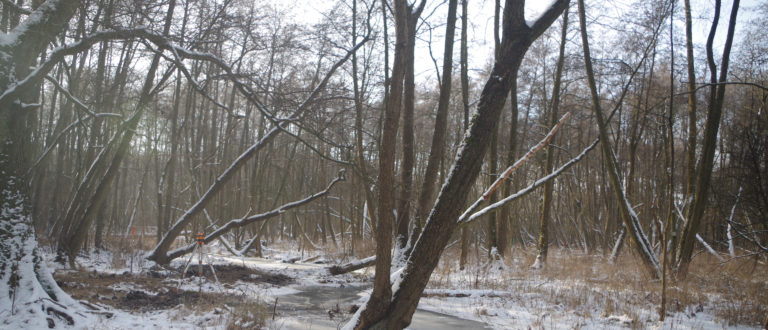At the end of February, the last steps of the rewetting measures at the largest of the three project sites in the Biesenthaler Becken, at the Pfauenfließ, were successfully completed.
Already at the end of October, drainage ditches could be closed at the two smaller peatland areas between Plötzensee and Hellsee in order to improve the hydrological situation of these degraded peatland areas (Blogarticle 1.12.20)
In November, restoration works on the Pfauenfließ had to be interrupted, first due to a corona case and then due to technical difficulties.
It was not until the end of January that a newly contracted specialist company was able to continue this work here and complete it on time a month later. The partly very wintry conditions brought even the lightweight special technology used to its limits; on the other hand, the partly frozen ground in the very wet terrain proved to be advantageous.
The following photo documentation provides an insight into the final work steps.
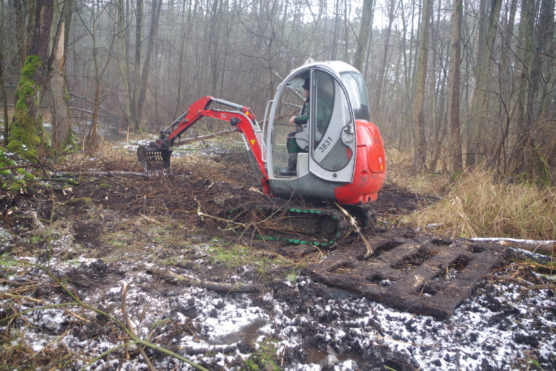
The small excavator driving on pallets is used to seal side ditches opening into the Pfauenfließ with logs, branches and soil material. Such ditch seals were created at a total of over 40 sites. Photo: Jonathan Etzold

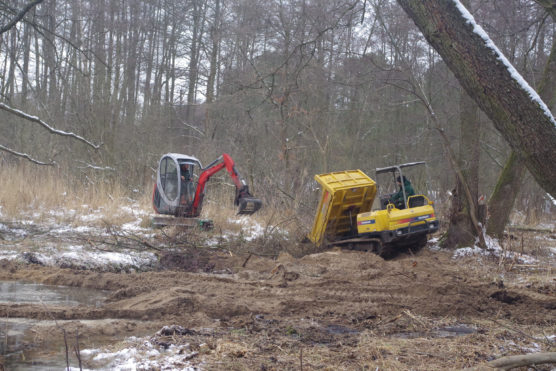
Shortly before the mouth of the Pfauenfließ into the Finow River, a 60-meter-long so-called bottom glide was installed to significantly raise the water level in the peatland area upstream. For this purpose, logs were installed transversely as steps and the spaces in between were filled with branches and mineral soil. Photos: Jonathan Etzold

View in the direction of flow along the completed bottom glide. This picture shows that the ecologically important continuity of a natural watercourse has been preserved. Due to the regrowing vegetation, the traces of the restoration work will no longer be visible in the terrain after a short time. Photo: Jonathan Etzold
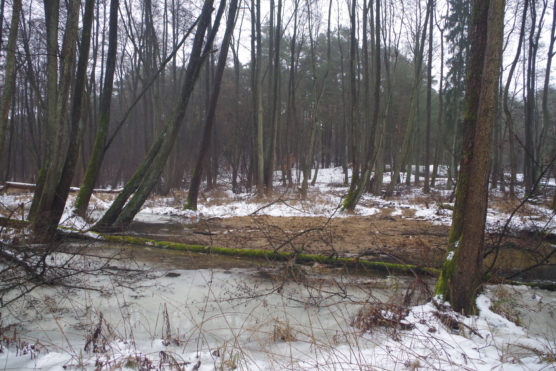
The water level in the Pfauenfließ was also increased 500 m upstream of the bottom glide by reducing the cross-section of the watercourse. This was done by installing logs, branches and soil material. Photo: Jonathan Etzold
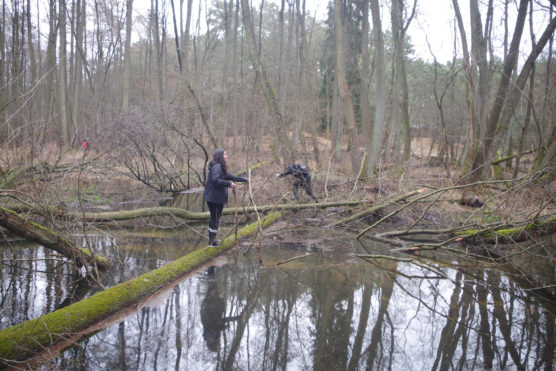
A higher water level in the Pfauenfließ will reduce the loss of peat in this peatland and in the best case lead to a regeneration of the peatland. Dry feet will then no longer be able to cross the peatland. Photo: Jonathan Etzold


